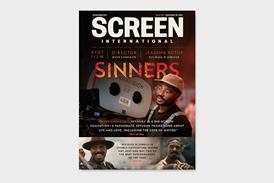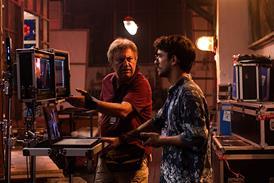Minority training in Australia
Indigenous Australians now comprise just 3% of the country's population and until the Australian Film Commission (AFC) stepped in to create a dedicated indigenous branch in 1993, they had virtually never had the chance to tell their own stories on screen.
This year, the focus on indigenous film-makers looks set to sharpen further still. The branch has been taken over by Screen Australia and its annual budget is expected to double to $2.6m (a$4m) in 2009-10.
Some 80% of this is set to go towards special initiatives such as Short Black and Bit of Black Business which are aimed at identifying indigenous talent and backing them over several years. Participants are encouraged to direct one of two shorts and ultimately a feature, as well as attend laboratories and workshops.
'We don't give people money for production and send them away unless they are very experienced,' says branch head Sally Riley. 'We take them from conception to delivery using a one-on-one process where they get feedback on their scripts, workshops with cinematographers and actors, editing sessions. We end up with a better product because it's such an intensive, rigorous process.'
The newest scheme is feature film development programme The Long Black, in which up to five projects by indigenous film-makers go forward to receive $16,000 (a$25,000) towards writer, producer and script editor fees, before possibly going into development. And with three features by indigenous directors coming out this year, as a result of Screen Australia's input - Warwick Thornton's Samson And Delilah, Richard Franklin's To Hell And Back and Rachel Perkins' Bran Nue Dae - this will double the number of features released by indigenous people in the history of Australian cinema.
CASE STUDY - SCREEN AUSTRALIA - WARWICK THORNTON
Only a handful of features have been written and directed by indigenous film-makers, and Warwick Thornton's debut feature Samson And Delilah, which had its world premiere at the Adelaide Film Festival in South Australia on February 20, is one of them.
He puts this down to the help he received from Screen Australia: 'All my development as a film-maker has been because of them,' says Thornton, of the indigenous branch. 'Through those years of workshops, I've learned so much.'
After shooting his first feature film, Radiance in 1997, his career took a nosedive. 'It just stopped and I was sitting around with no money.'
Thornton applied to be part of the indigenous branch's first initiative, From Sand to Celluloid. 'Rather than waiting for work to come to me, I decided to write a short film so I'd be able to shoot it.'
He later made Greenbush through the branch. It went on to win the 2005 Panorama short film prize at Berlin. This year he will also be the cinematographer for indigenous writer/director Beck Cole's debut feature The Place Between.
CASE STUDY - NEW BLACK SHORT DRAMA - ROMAINE MORETON
Romaine Moreton has been a scriptwriter for several years. Through Screen Australia's New Black short drama programme she managed to branch out into directing her first short film, The Farm, which was shot over five days in December. The script was one of nine chosen for development from 25 applications. Advisers on the course included Australian directors Phillip Noyce (Rabbit-Proof Fence) and Ray Lawrence (Lantana) and Mexican writer-director Guillermo Arriaga (Babel).
Moreton, who graduated from the Australian Film, Television & Radio School (Aftrs) in 1997, says: 'I like how managed the whole process is and how it goes from the script right through to production. It allows you to become familiar with the technology of film-making but gives you the space to develop your own voice.'
She is now developing a feature, Touch The Wire, through the Long Black drama initiative. 'You either love it or hate it,' she says about the hands-on nature of the training.



















No comments yet